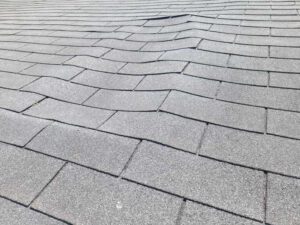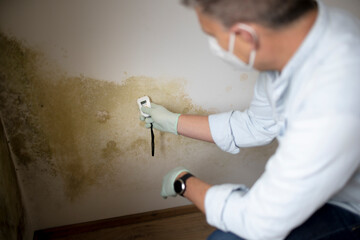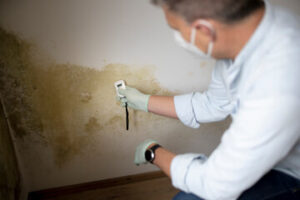If you’re thinking about making some major home improvements, like roofing installation, it can be easy to find yourself overwhelmed. Luckily, there are experts who can help. Contact Colorado Springs Roofing for professional assistance.
A top-tier roofer will start by removing your old shingles and installing new underlayment and flashing. It’s a loud process, and you should relocate any cars or garbage cans near the house so they don’t get hit by flying debris.
One of the most dangerous parts of any roofing job is climbing ladders and scaffolding to work at higher elevations. Even a slight mishap can lead to fatal falls. Falling from a roof is the number one cause of death for workers in the construction industry. These deaths are entirely preventable with proper safety equipment and practices.
During the re-roofing process, all workers should wear hard hats and use a harness when working on a ladder or scaffolding. They should also make sure that they are wearing comfortable shoes with rubber soles to improve traction. They should always stay aware of their surroundings and keep both hands on the ladder rungs at all times to avoid falling.
It’s important for the roofing contractor to identify any potential hazards before starting a project. This includes identifying access points and any materials that might require additional protection on the roof. It’s also important to talk with the homeowner before the project begins to ensure they are satisfied with the work and that they understand their warranty expectations. Some roofing contractors also offer a checklist to help their clients with these tasks.
Another major hazard is power lines. During roofing installation, workers should never place a ladder near power lines or touch a live wire with their feet. They should also check that any existing debris has been cleared from the area. Lastly, they should always disconnect the nail gun from the air pressure system when not in use.
Lastly, it’s essential to install roof vents during the re-roofing process. These vents will allow the attic space to breathe, preventing moisture from collecting that can lead to mold and rot. They will also help to exhaust hot air and ice dams during the winter months.
Whether it’s online or word of mouth, a roofing contractor’s reputation is everything. Satisfied clients will be more likely to post positive reviews and recommendations, while dissatisfied customers are more likely to spread negative comments that can damage a business’s reputation and potentially lead to future business losses. Taking the time to address any concerns with a client can help a roofer minimize their risk of business loss.
Preparation
A new roof is more than just a way to update the look of your home; it protects you and your family from rain, snow, hail, and other elements that can cause damage and increase utility bills. It is also one of the best ways to add value to your property if you are thinking about selling it in the future.
During the roofing process, you may experience vibrations and hammering that can affect walls in your home, especially those on the upper floors. Taking down mirrors, pictures, framed photos, and other hanging items is a good idea to avoid any damage. Similarly, you should remove anything on shelves that could fall or break during the installation process.
You should also clear out the attic if you store any valuables or heirlooms there. Even the most conscientious roofers can kick up dust during a roofing job, and you don’t want your precious items exposed to that.
Outside your home, make sure to clear the yard and patio area of all children’s toys, bikes, grills, and other movable objects. Keeping these away from the work area helps keep everyone safe, and it keeps the contractors from getting tripped over them or knocking them over. You should also take the time to organize and put away outdoor furniture and other items that might be in the way while the roofers are working.
You will also need to provide a power outlet for the contractors to use while they are working on your roof. An exterior outlet is ideal, but if you don’t have one, you can provide an outlet in the garage. It is best to place it in a spot that doesn’t get much traffic, since extension cords can be a tripping hazard. Make sure you have a contact name and phone number for the contractors in case they need to reach you.
Removal
Re-roofing costs depend on a variety of factors, including materials, labor, and location. The number of stories and slope of your roof also affect the cost. To minimize the impact on your budget, talk to local building contractors about obtaining a permit and scheduling your work during clear weather.
When you start tearing off the existing shingles, be sure to lay down tarps to protect your yard and landscaping from the thousands of nails that will rain down from the old roof. You will also want to invest in a dumpster to reduce waste.
Begin by removing a 2- to 3-foot section of the roofing and throwing it into the dumpster. As you remove a section, work toward the roof jacks. When you reach the jacks, have someone there to gather and toss the discarded shingles into the dumpster. Then move on to the next section. Be sure to carefully pull up and discard shingle debris, as well as the old self-stick ice-and-water underlayment. Once the shingles are removed, begin working on removing the flashing. Start at the top of a valley and work your way down, prying loose flashing as you go. Don’t forget to remove flashing around air vents and pipe flashings.
Installation
Roofing installation is a labor-intensive project that requires bending, climbing, carrying, and sweating. It can also be dangerous, especially for those who have no head for heights and are not in good physical condition. It’s best for homeowners to hire professional roofers for a job like this, as it takes an immense amount of knowledge to do it correctly.
Before installing new shingles, the contractor will replace any old flashing, which is material around chimneys and where different roofing planes meet. This is a vital step that can prevent leaks. In addition, a layer of shingle underlayment will be placed over the existing shingles to provide added protection. The roofer will then install the ridge vent along the roof’s peak. This can aid in the circulation of attic air and be crucial for preventing ice dams during the winter.
Once the underlayment is in place, the roofer will run a row of shingles up the ridge, then cut and nail the shingles to the underlayment. The shingles will be nailed in a pattern that includes close nails near the edge and more spaced-out nails towards the middle. This will be repeated until the ridge is covered. The last shingle will be installed over the drip edge, which is fastened to the underlayment with cap nails that are close together at the edges and spread out more towards the middle.



 Mold tests can be performed on air, swabs, and bulk samples.
Mold tests can be performed on air, swabs, and bulk samples.